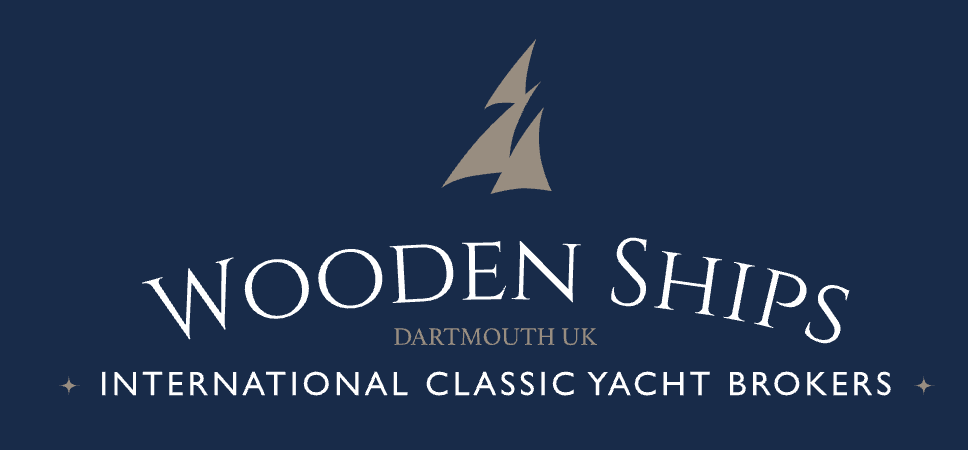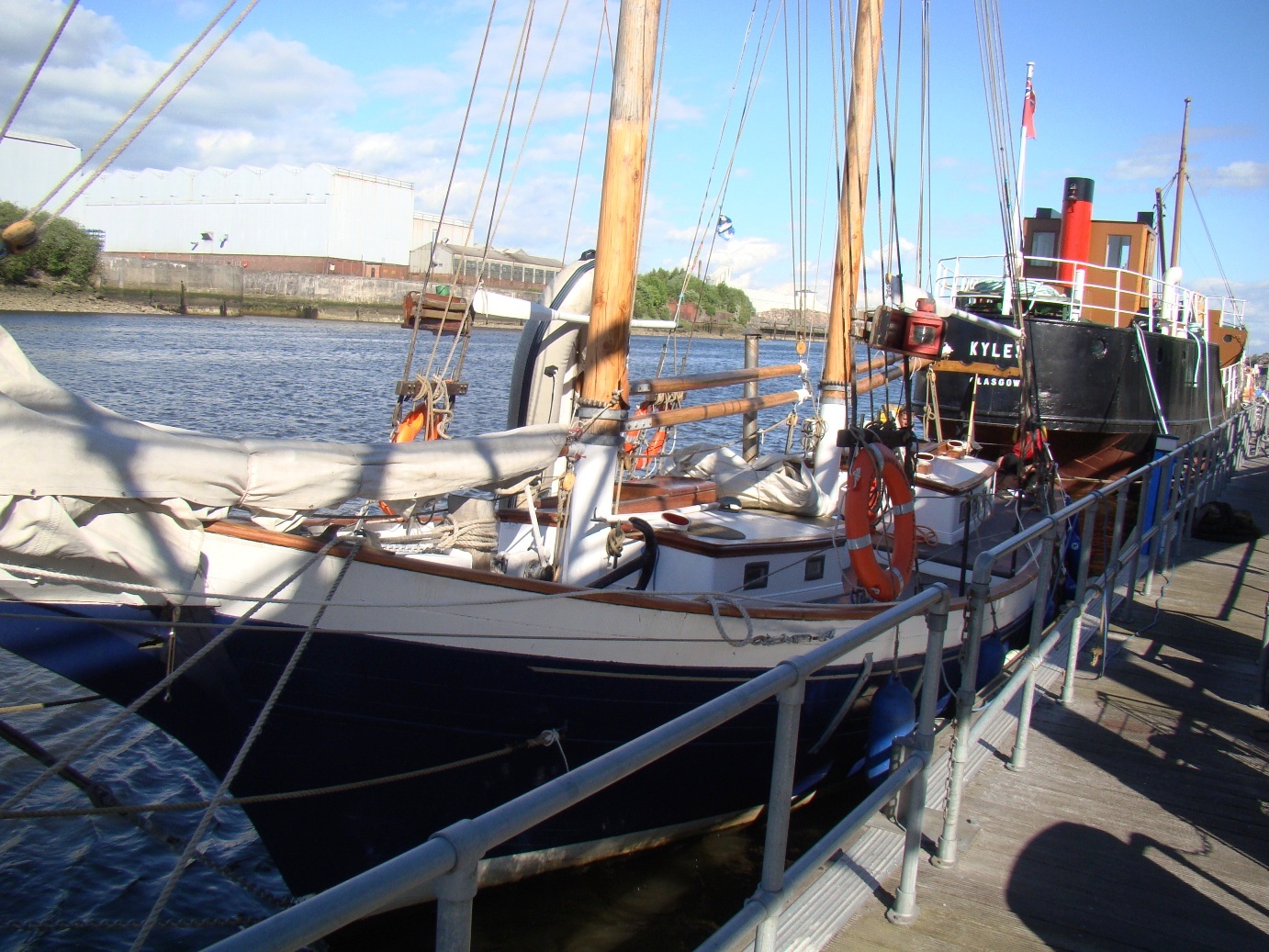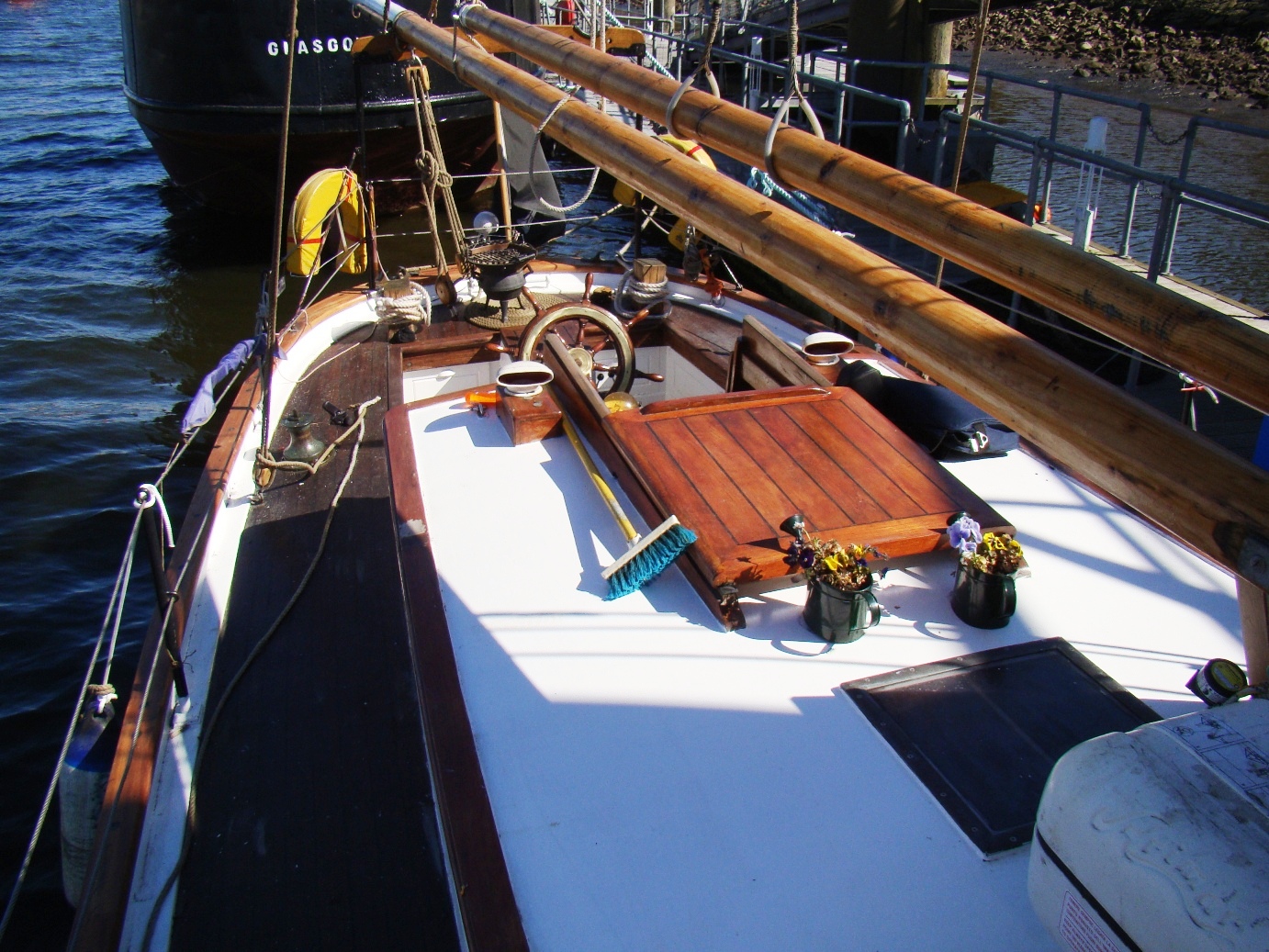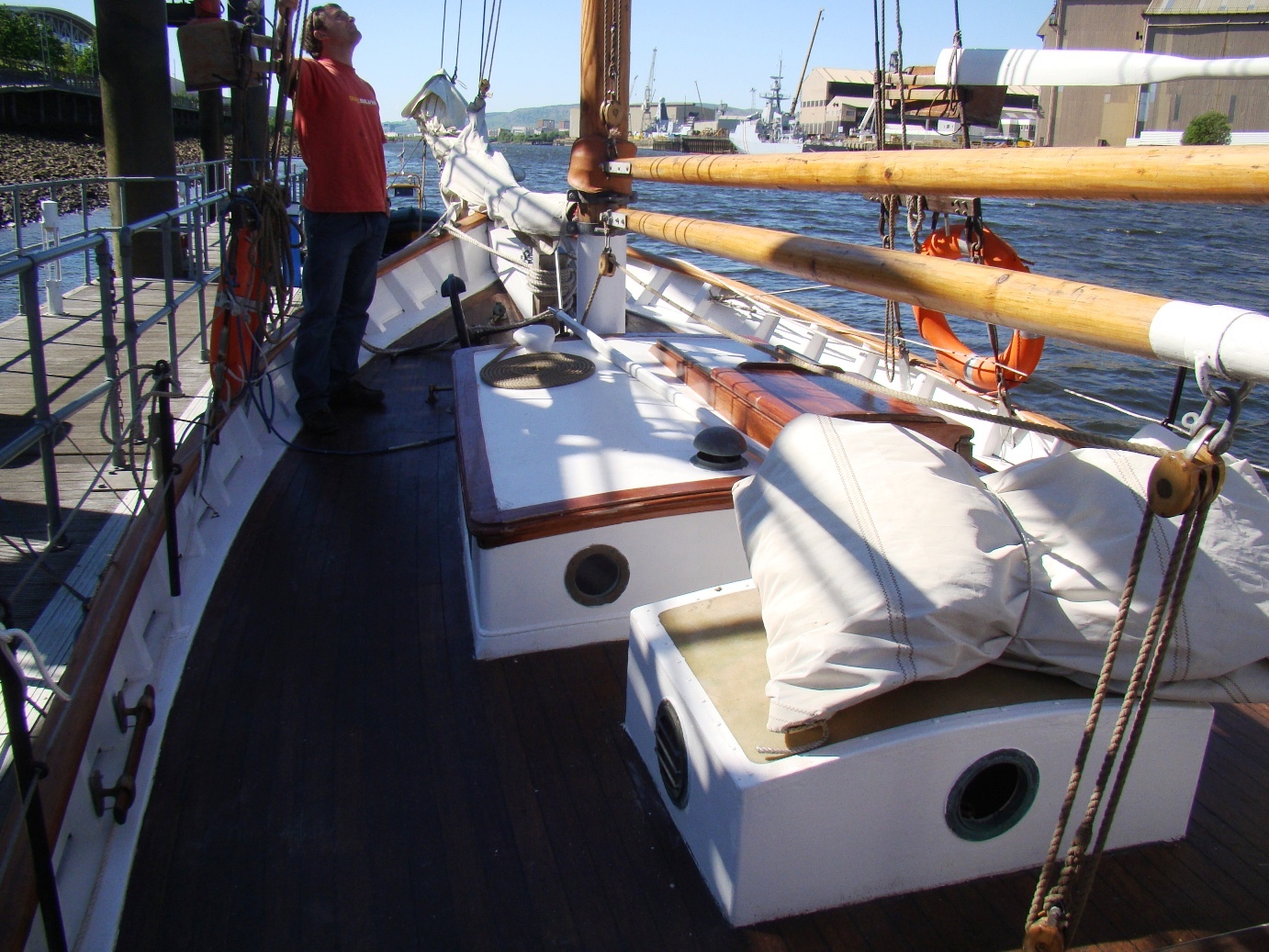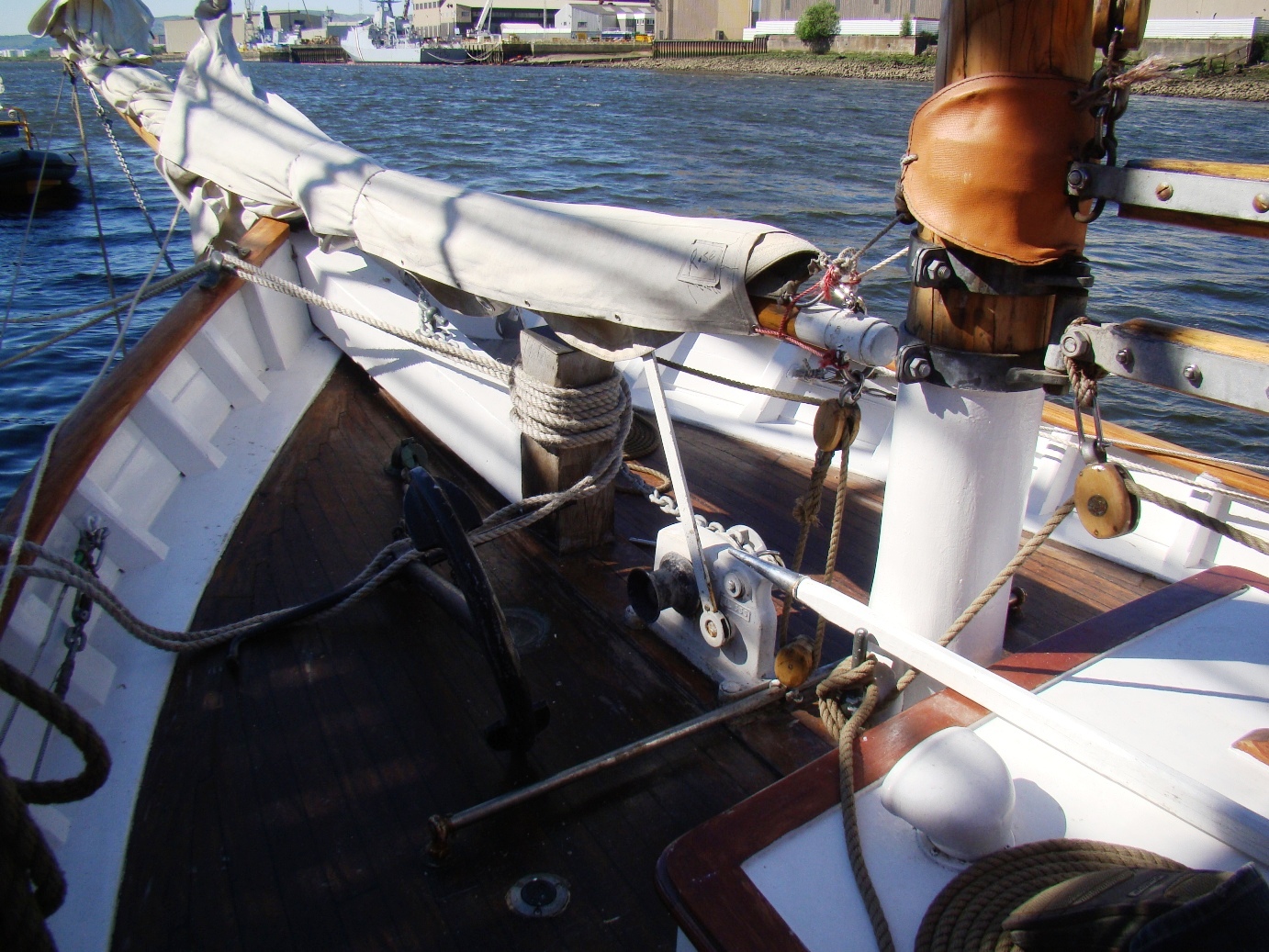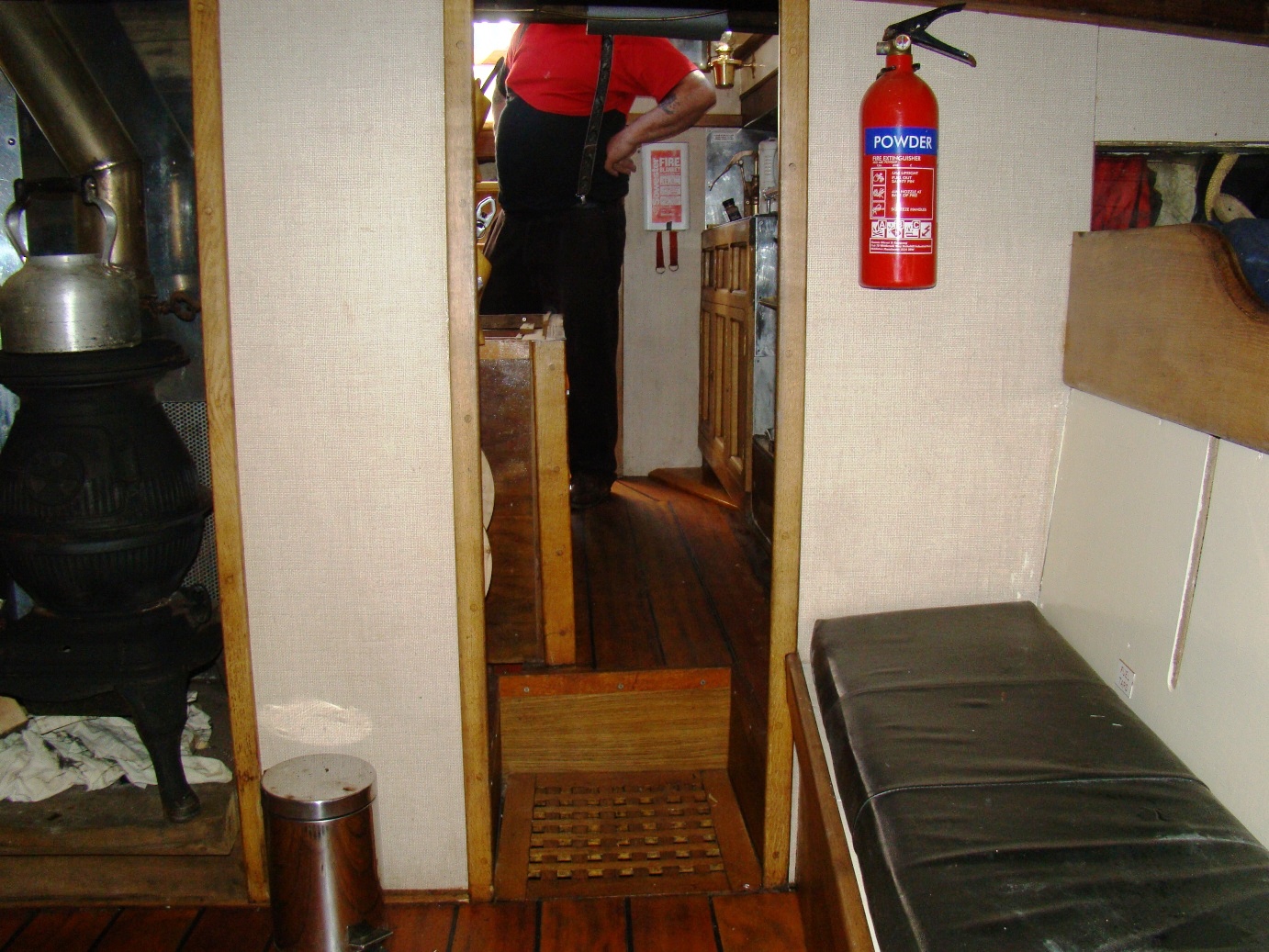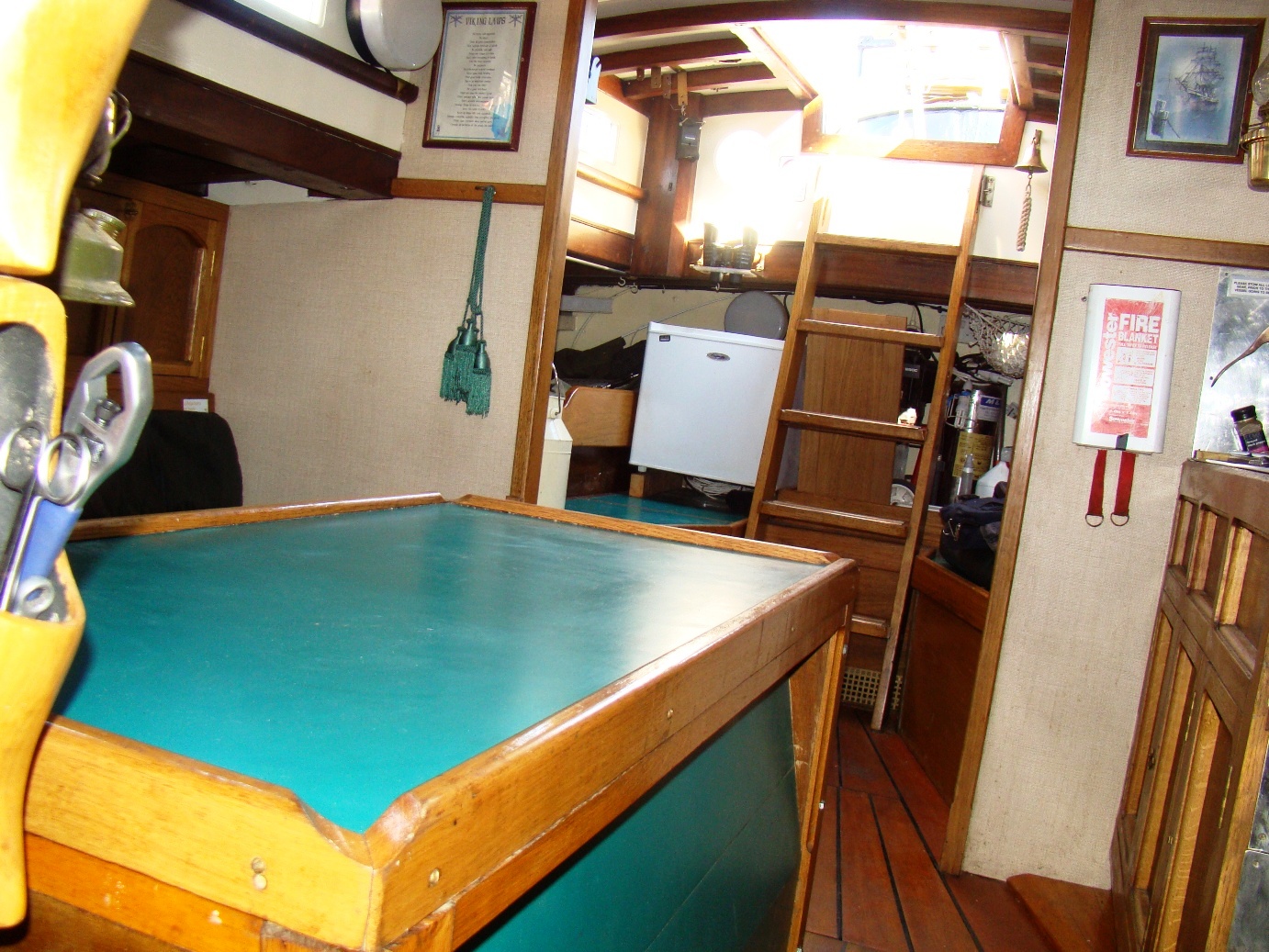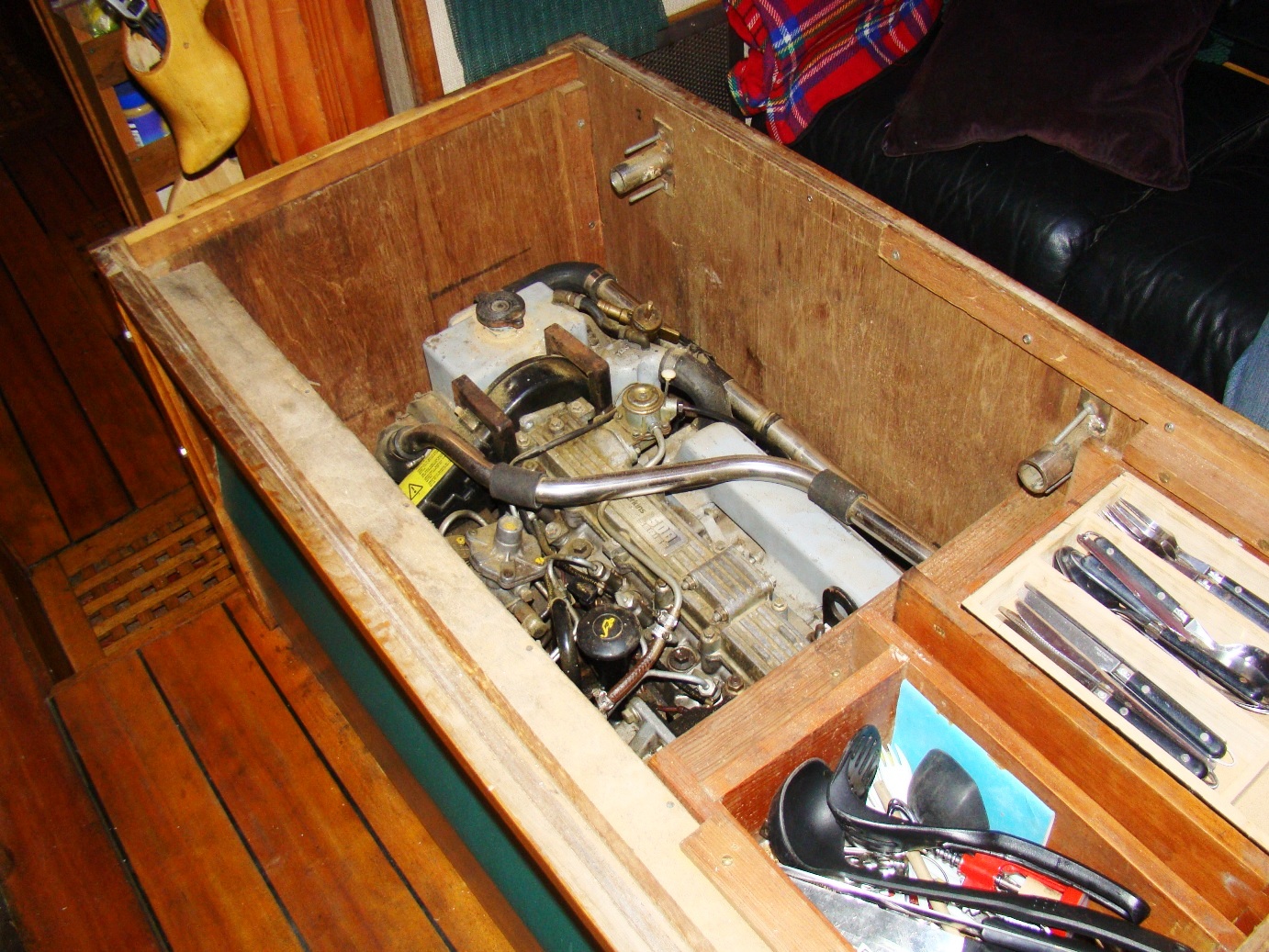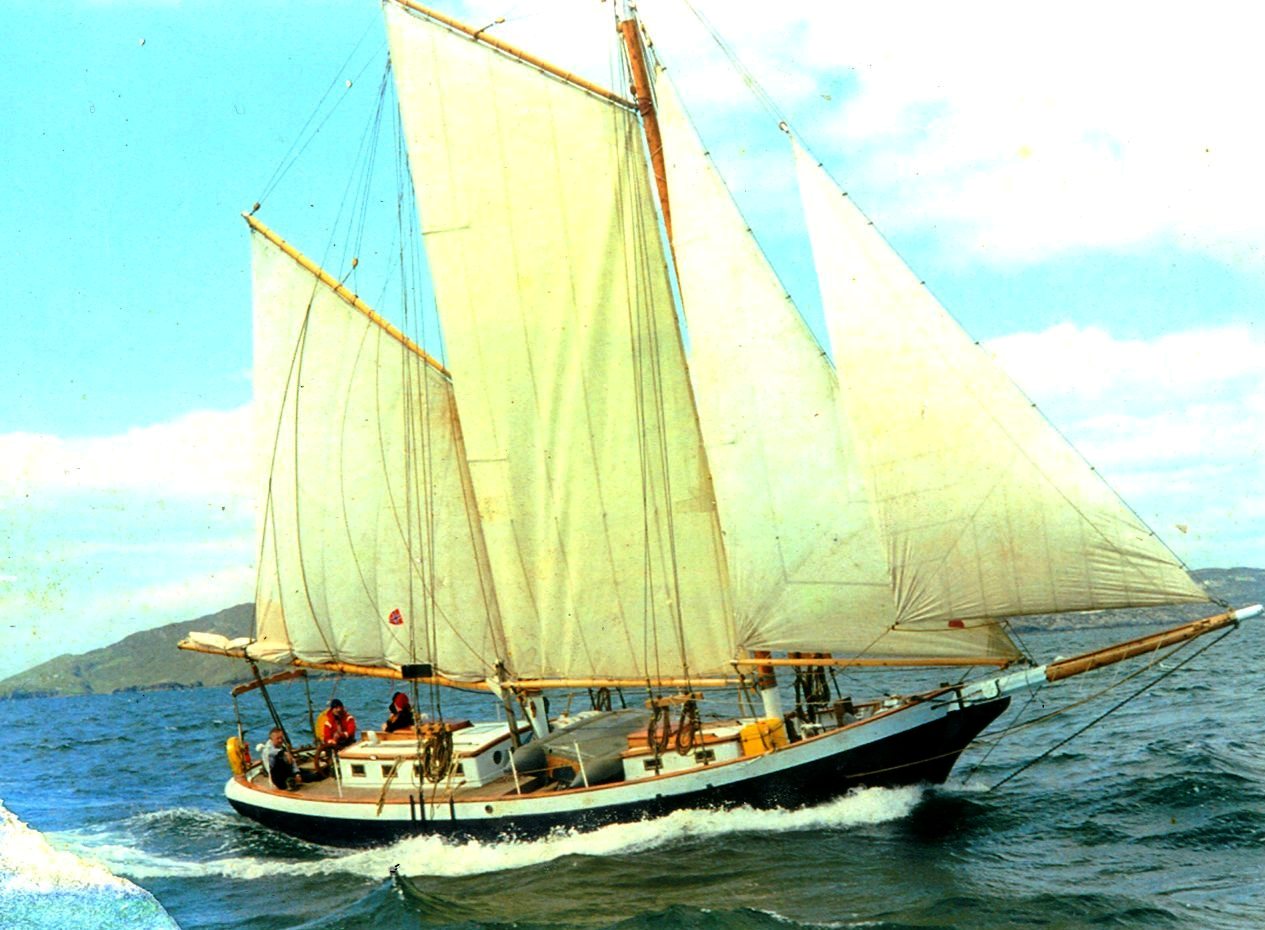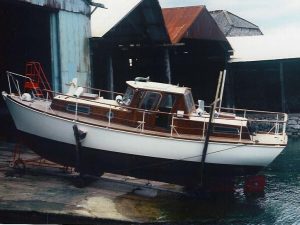HISTORY & DESCRIPTION:
The design is based on the American East Coast working schooners with a clipper bow, distinctive counter stern and generous beam.
For many years the builder operated a boat yard in Caithness in the very north of Scotland before retiring to Glasgow where he was soon involved in a youth boat building project and built the yacht in Wishaw, south of Glasgow.
Since launch, she sailed in the 1999 Cutty Sark Tall Ships Race and ran charters for youngsters on the West Coast of Scotland skippered by her builder.
A sistership, Mary Bryant was built in Fowey, Cornwall in 1980 and the builder sailed in her many times. One of his boat builders crossed the Atlantic in the Mary Bryant thus bringing practical knowledge of the design to the building of the yacht.
The yacht currently has a Code of Practice Cat 2 Certificate (60 miles from safe haven) for 8 people.
This is a very robust construction with scantling slightly in excess of the designer’s spec – for example an 8″ moulded oak keel rather than the 6″ specified in the drawings.
Planked in 1 3/8″ larch. The top 3 strakes are thicker at 1 ¾”. The frames are sawn oak in pairs with 4 steam bent intermediate timbers on an oak back-bone. The planking is fastened to the sawn oak frames with galvanised boat nails and with copper rivets and roves to the stem bent timbers. The beamshelf is constructed with shelf and clamp to give a very strong girder
Long external iron ballast keel cast by Iron Bros of Wadebridge, Cornwall. 14 stainless steel keel bolts in pairs. Oak floors with stainless steel brackets between floors and keel bolts to tie them together.
The deck is laid in 1 ¾” iroko, caulked and payed in pitch and sealed with linseed oil, yacht laid to the white-painted iroko cover-boards. Iroko deck beams, half beams and carlings with bronze tie rods between carlings and beamshelf to stop spread. 6″ step in the deck midships just forward of the main mast gives extra head-room in the main accommodation. 12″ bulwark all round on oak stanchions through the cover-boards, separate from the frames, with varnished iroko capping rail.
Twin, waist-high guard-wires from the fore mast rigging to aft round the permanent main boom crutch.
The cock-pit is formed by a large, self-draining foot-well with seating on the deck. Locker doors in the vertical sides to the well to generous stowage under the side decks and access to aft. Wide bridge deck between the well and the aft coach-roof which shelters the crew in the cock-pit.
Wheel steering on Edson bronze double screw gear to the rudder stock is positive and sensitive. Massive oak twin, bronze-capped Sampson posts in the after corners of the cock-pit take the mooring lines. Massive oak bronze-capped Sampson post on the fore deck takes the heel of the fixed bowsprit and the fwd mooring lines.
Twin coach-roofs with painted plywood coamings fitted with rectangular fixed windows. Roofs formed by 2 x ½” ply, epoxy-glass sheathed, varnished iroko margin boards with nicely moulded edges and rounded corners.
Pair of bronze opening ports in the coamings either side of the hatch and another pair in the forward facing coaming.
After coach-roof with sliding hatch and wash-board cabin entrance from the cock-pit into the aft accommodation.
Dorade vents either side the hatch and a further pair on the coach-roof deck fwd.
Forward coach-roof built the same as the after coach-roof with varnished iroko sliding hatch and washboard entrance.
Between the two coach-roofs is a square coaming with opaque grp roof to give light and head-room to the midships cabin below.
Gaff schooner rig on varnished solid pine masts.
Pole fore mast. Main mast set up to take a fidded topmast. Varnished slab-reef booms on twin galvanised steel mast bands, the mainsail boom extended over the counter. Varnished pine gaffs with leathered saddles.
Galvanised wire standing rigging set up with square-rig splices to galvanised rigging screws to external galvanised steel chain plates. Twin lowers to both masts with sheer poles fitted with belay pins. Cap shrouds to the main topmast.
Fixed bowsprit with twin chain bob-stays and fixed guys to rigging screws. Running back-stays to the main mast hounds on tackles. Inner and outer fore stays. Fixed triatic stay between the mast caps.
Sails.
1200sq’ in fore sail, mainsail, jib and staysail.
Mainsail by Nicholson Hughes in cream duradon, 2 seasons old.
Fore sail by Nicholson Hughes in cream terylene.
Boomed staysail from the Mary Bryant.
Jib in cream terylene from the Mary Bryant.
Big reacher jib in cream terylene, used only once.
Main topsail
Fisherman staysail sets between the masts
Pair of bronze, top-action winches on the deck by the cock-pit take the back-stays to windward and the jib sheets to port.
All halyards on block and tackle.
Perkins 500 48hp fresh water cooled naturally aspirated, flexibly mounted diesel engine mounted on the centre-line under the saloon table which removed to give full all-round access. PRM 2:1 twin lever controlled gear-box to conventional centre-line shaft and 3-blade prop. 6 knts at 2000rpm
45galls Vetus rigid plastic fuel tank under the port berth in the midships cabin with sight guage. 2 x 12v batteries on 12v circuits. Wired for 240v AC with 2.2Kw inverter
8 berths.
The interior is divided into 3 separate spaces – saloon cabin, midships cabin and fore cabin.
Saloon cabin under the after coach-roof with steps down from the cock-pit.
Large, open quarter berths port and stbd with large seat/lockers in front below each side. Steps between.
Part bulkheads each side.
Galley to port with Taylors 2-burner, grill and oven paraffin gimballed cooker in a stainless steel lined recess with crash-bar.
Double stainless steel sinks with mixer tap drains over-board. Bronze Patay salt water tap. Stowage behind and under galley.
Settee berth to stbd, stowage under.
Table between over the engine. Cutlery drawers in the after end. Extension leaf slots in stbd side and room for a stool at the after end leaving clear passage-way forward up the port side by the galley.
Port side doorway forward, duck-down through to the midships cabin. Full height locker to port under the side deck.
Midships cabin with port and stbd hi-level berths with seat lockers below each side. Stbd berth slides out to make a double berth. Sky-light above.
Recess in the after bulkhead to stbd with Klondyke cast iron solid fuel cabin stove.
Bulkhead door forward. Walk-through heads compartment with porcelain hand basin and sea toilet.
Bulkhead door through to the fore cabin under the fwd coach-roof. Port and stbd berths. Steps to stbd against the after bulkhead up to deck.
The fore cabin is open past the fore mast to the fore peak used for stowage.
Water.
45 galls in Vetus tank under midships cabin stbd berth. 2 x 20 gall stainless steel tanks in the fore peak. 1 x 10 gall calorifier hot water tank. H&C pressurised water supply.
Heads compartment hand basin and galley sinks drain overboard. Heads pumps over board.
Navigation equipment.
Compass
Lowrance chart plotter
Lowrance fish finder/sounder
GPS
New VHF
Old VHF
Safety equipment
Full MCA Category 2 safety equipment specified for 8 persons.
Life raft on hire, renewable
Ground Tackle
SL 555 manual windlass
Ample chain
2 anchors
Deck equipment.
11′ Rib
Warps and Fenders
12′ awning between the masts
BROKERS NOTE:
This traditional schooner has a Code of Practice Cat 2 Certificate, 60 miles from Safe Haven, 8 people.
Guide: £89,000
Lying: Scotland
Viewing: Through the brokers.
Tel: 01905-356482 / info@classicyachtbrokerage.co.uk
